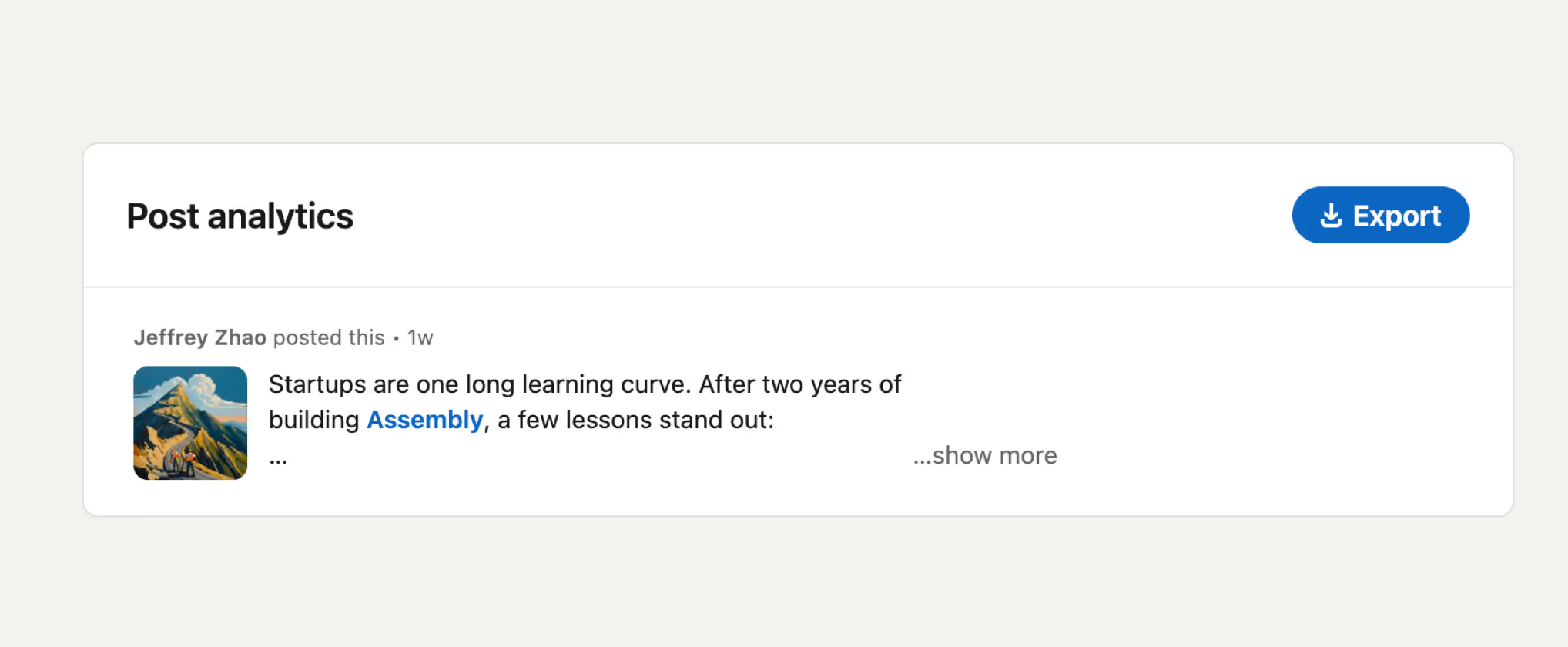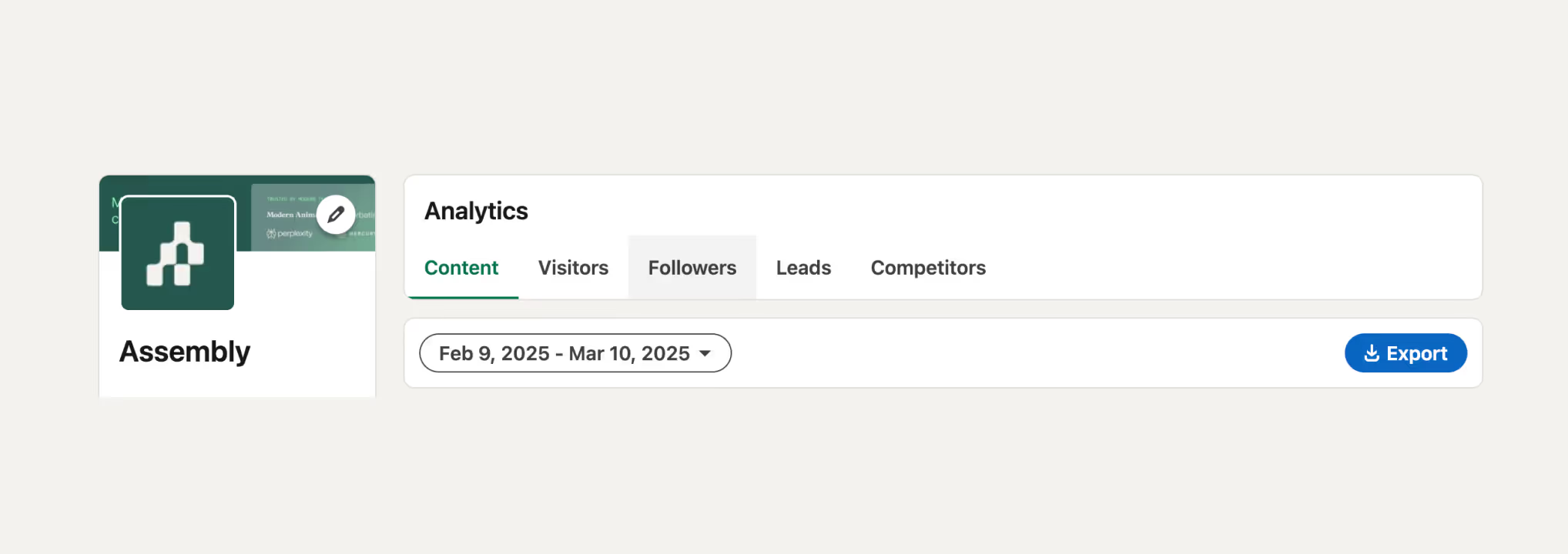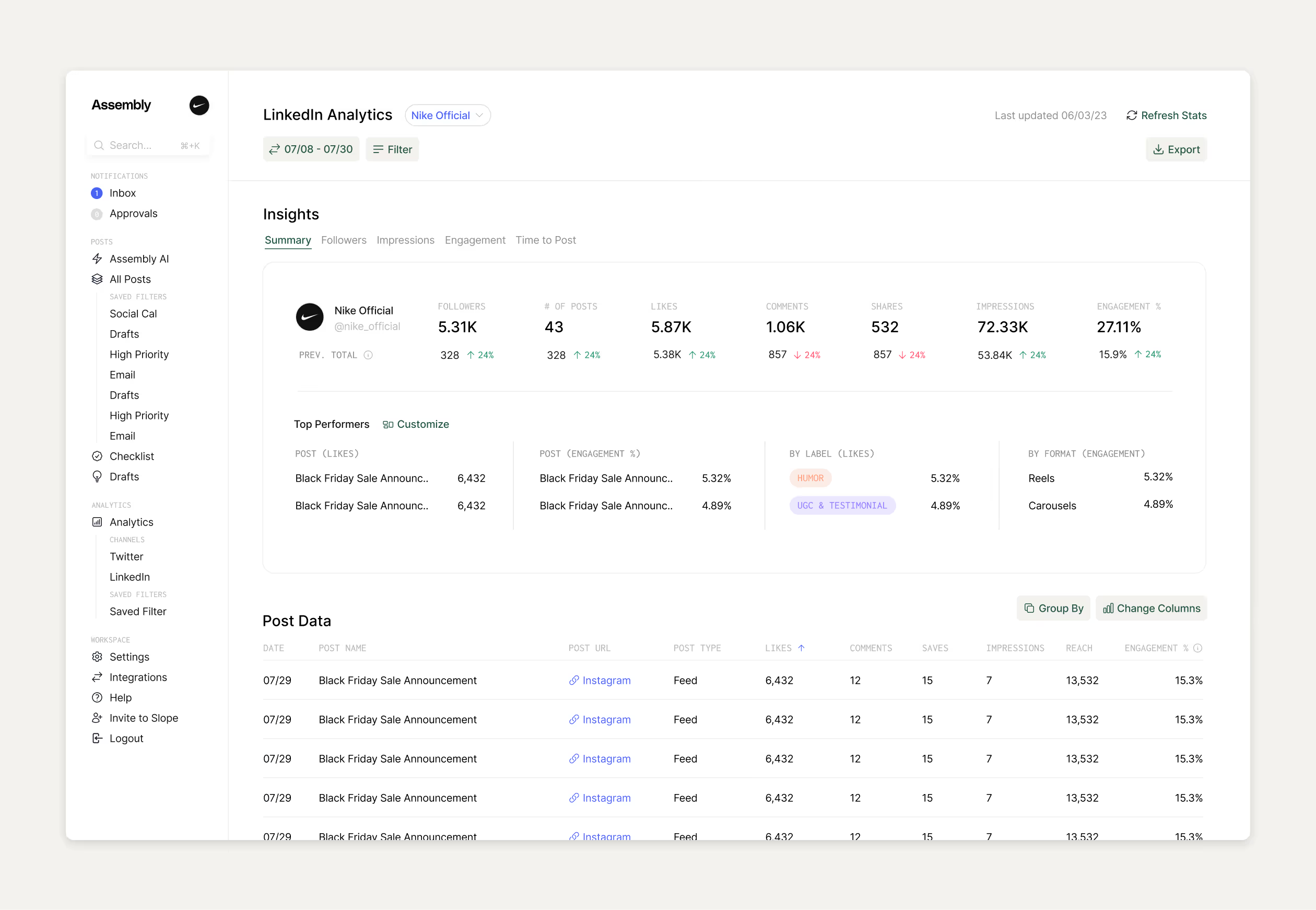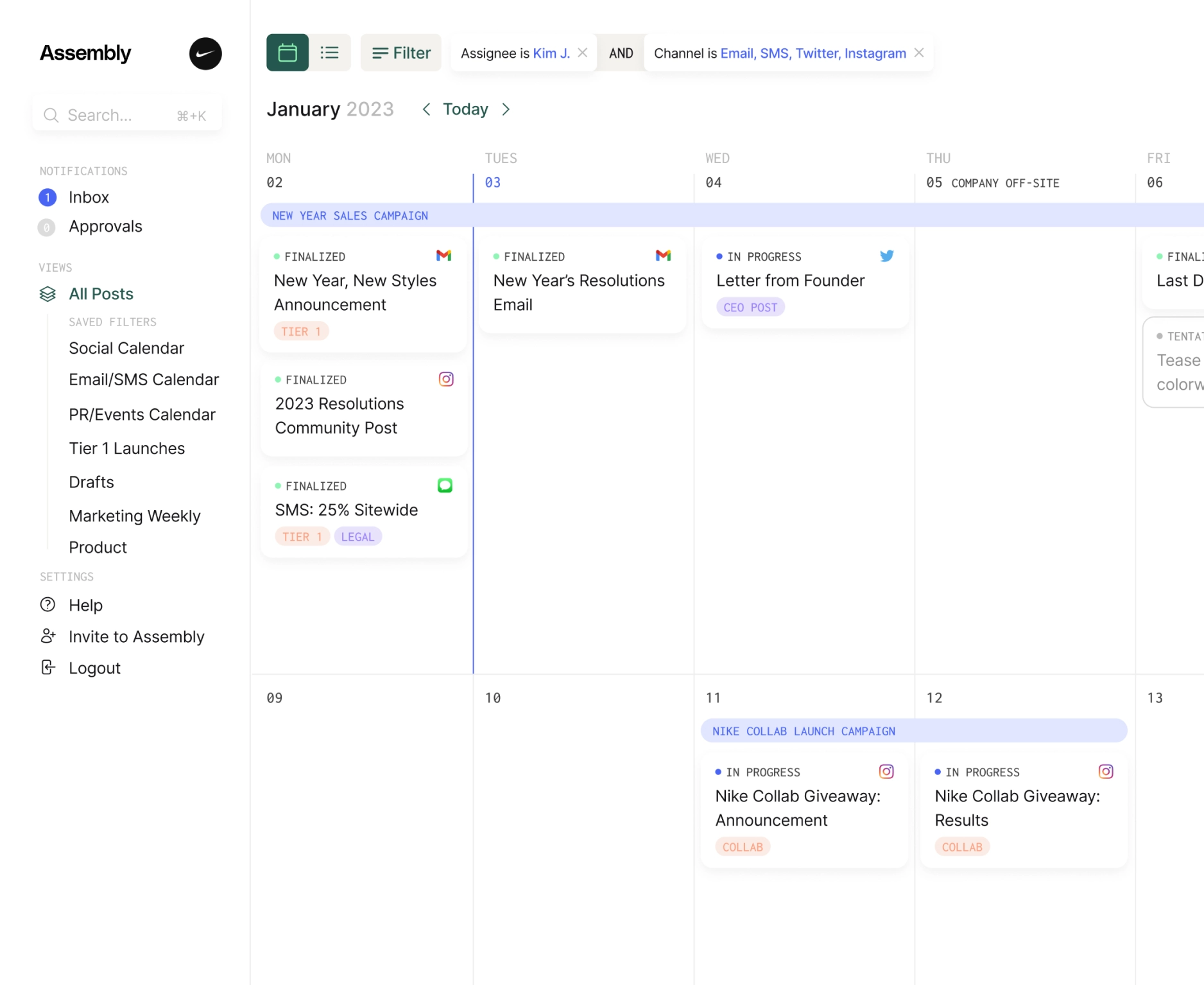
How to Export Analytics from LinkedIn to Excel or a CSV

Introduction
Understanding your LinkedIn analytics is crucial for measuring the success of your content and optimizing your social media strategy. While LinkedIn provides built-in analytics tools, exporting this data into a CSV or Excel file allows for deeper analysis, easier reporting, and greater flexibility in how you interpret your insights.
In this guide, we’ll walk you through how to export LinkedIn analytics manually and introduce a more streamlined, powerful way to do it using Assembly.
How to Export Analytics as a CSV (or Excel File) from LinkedIn
LinkedIn allows you to export key analytics data directly from your account. Here’s how you can do it step by step:
Exporting Analytics for Creator Accounts
For a Creator (individual) profile, you can export two types of analytics into a spreadsheet: analytics for a specific post, and analytics across all posts in a certain timerange.
1. For a specific post: In order to export individual post analytics, you can do the following:
- Click on the “Me” icon in the top right corner, then select “Posts & Activity.”
- Scroll to the specific post and click “View Analytics” in the bottom right hand corner.
- From there, you’ll see a blue “Export” button to download the analytics for that post.

2. For all posts in a timerange: If you’d like to download account level analytics on your Creator account, you can go to https://www.linkedin.com/analytics/creator/content/ and hit the “Export” button on the top right of your screen.
There’s also the ability to customize the timeframe that you’d like to export the analytics for.

Exporting Analytics for Company Pages
For Company Pages, head over to your LinkedIn Page, then click on the “Analytics” tab in the top menu.
From there you’ll see the same blue “Export” button in the top righthand corner. You’ll then select the timeframe you want to export analytics into a .XLS file.

Drawbacks to exporting analytics from LinkedIn
After processing, LinkedIn will provide you with a CSV file containing your selected analytics data. You can now open this file in Excel, Google Sheets, or other data analysis tools for deeper insights.
While this method works, it has some limitations—particularly if you manage multiple LinkedIn profiles or need a more customizable way to analyze data relative to performance on other social channels.
That’s where Assembly comes in.
A Better Way: Export LinkedIn Analytics as a CSV with Assembly
If you’re managing LinkedIn analytics regularly, you know that LinkedIn’s built-in export tool can be limiting. You’re restricted to your own account (unless you manually log in and out of multiple accounts), and the available data isn’t always as comprehensive as you’d like.
With Assembly, exporting LinkedIn analytics is faster, more flexible, and more powerful. Here’s why:
1. Export Data in One Click
Instead of navigating multiple menus, Assembly lets you export LinkedIn analytics directly from its platform. Whether you’re analyzing post performance, engagement rates, or follower growth, you can download the data you need instantly.
2. Get More Comprehensive Analytics
Assembly’s export includes detailed post insights such as:
- Post content (so you know exactly which posts performed best)
- URL of the post (making it easy to reference or reshare)
- Post type (image, document, video, or text post)
- Engagement stats (likes, comments, shares)
- Impressions, reach, and engagement %
3. Filter Data by Custom Timeframes or Post Type
Need insights from a specific campaign? With Assembly, you can filter LinkedIn analytics by custom date ranges or specific post types, making it easier to analyze trends and performance over time.
4. Export Analytics for Any Connected LinkedIn Profile
One of Assembly’s most powerful features is the ability to export analytics for any LinkedIn profile connected to your account—not just your own.
This is a game-changer for social media managers and agencies who handle multiple accounts. No more asking clients for their LinkedIn login details or switching between accounts manually. Just select the profile you want, and export the analytics with ease.

Why Export LinkedIn Analytics?
Exporting LinkedIn analytics into a CSV or Excel file opens up a world of possibilities for data analysis and reporting. Here’s why it’s worth doing:
1. Large-Scale Performance Analysis
When you have weeks or months of data in one file, it’s easier to spot trends. You can analyze which post types generate the most engagement, which topics resonate with your audience, and how your content strategy evolves over time.
2. Upload Data into AI Tools (Like ChatGPT) for Insights
Once you’ve exported your LinkedIn data, you can upload the CSV file into AI-powered tools (like ChatGPT) to generate insights. You can ask:
• “What are the top-performing posts from this dataset?”
• “Which keywords or themes appear most frequently in high-engagement posts?”
• “What’s the best day and time to post based on past performance?”
This allows for instant data-driven decision-making without manually sifting through rows of data.
3. Share Reports with Your Team or Clients
CSV exports make it easy to create performance reports. You can quickly share LinkedIn analytics with your marketing team, clients, or stakeholders to showcase results and guide strategy discussions.
Ready to start growing on social media?
Assembly is an end-to-end social media management tool. Join 500+ marketers and agencies who have made the switch.






